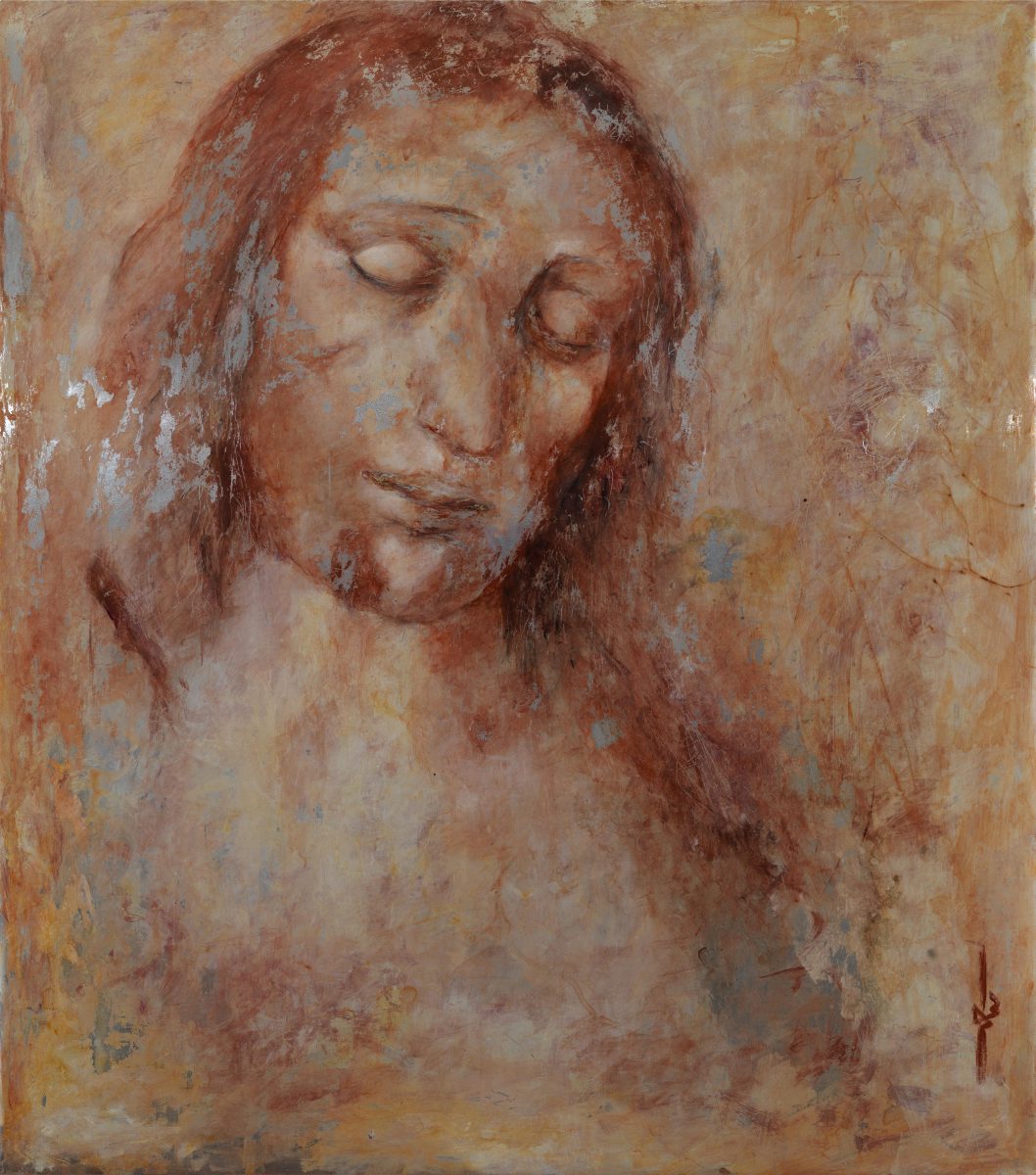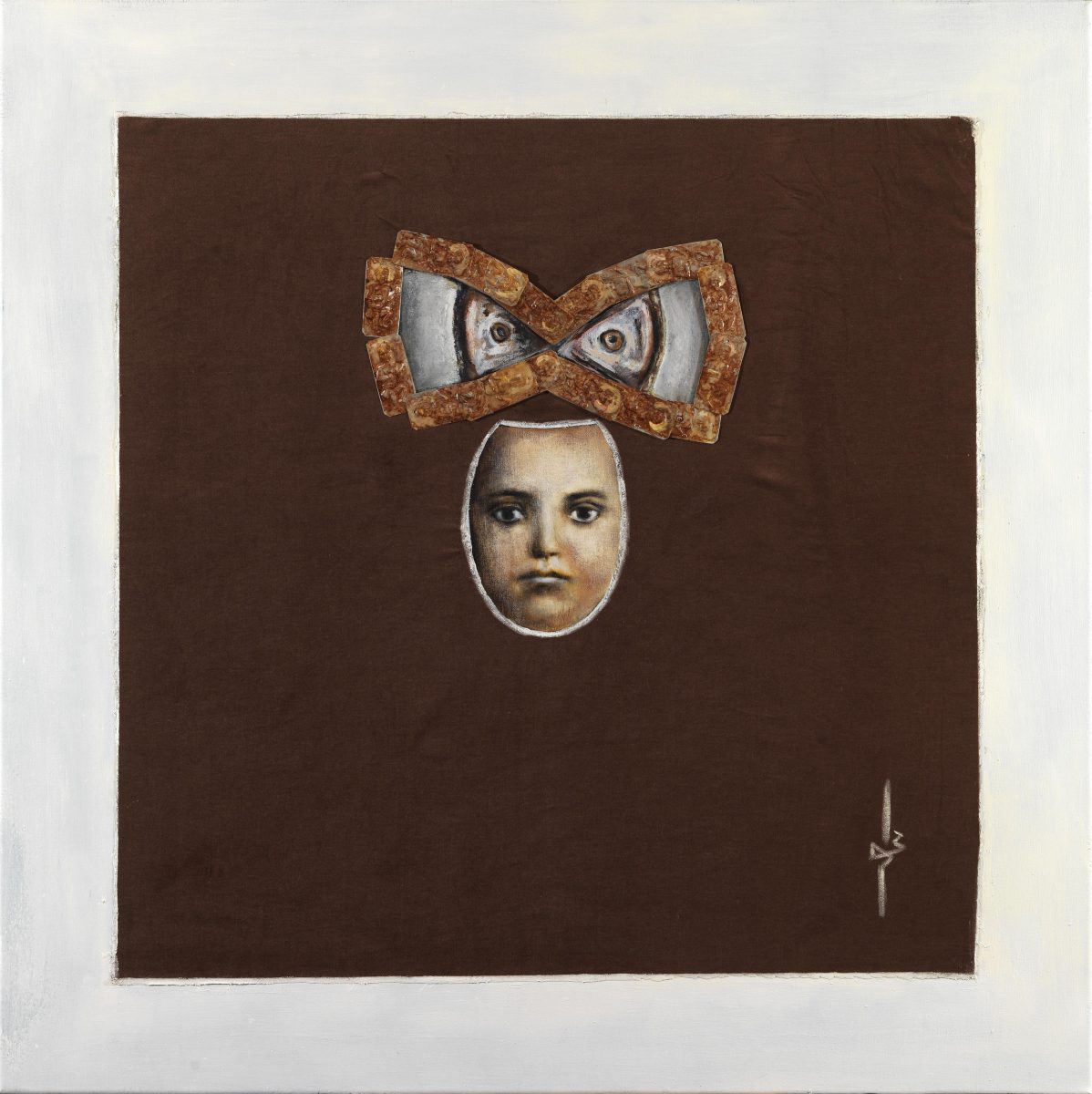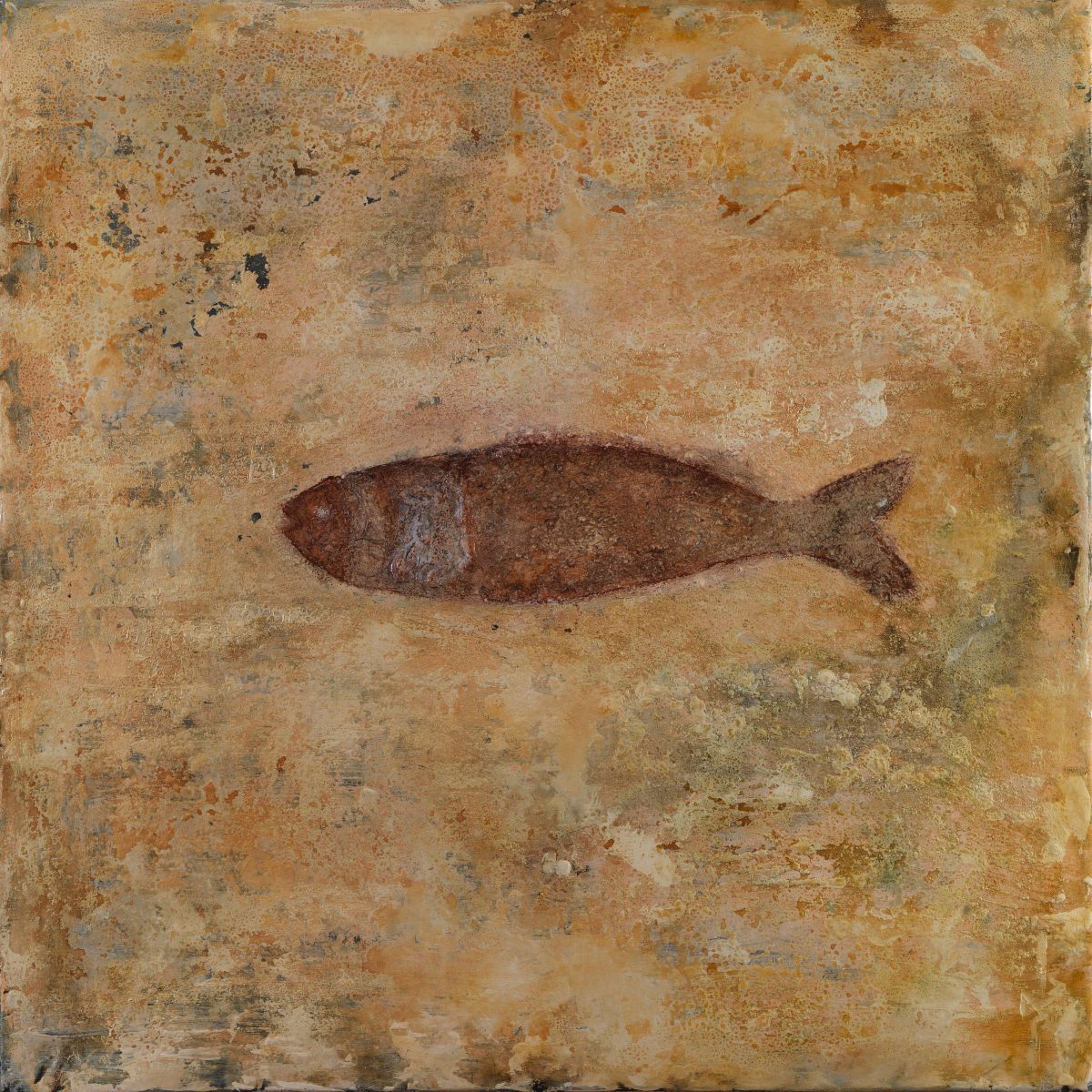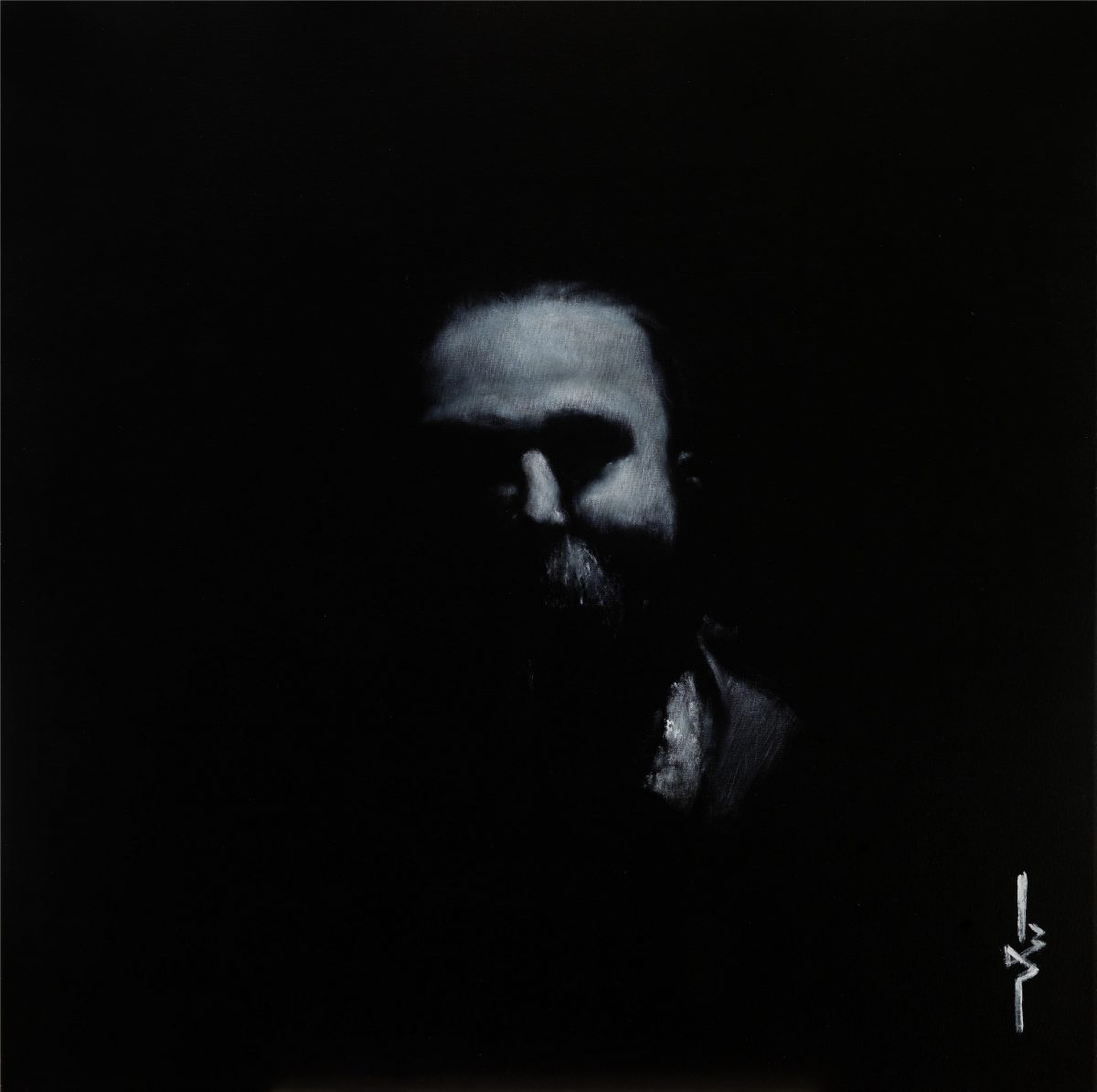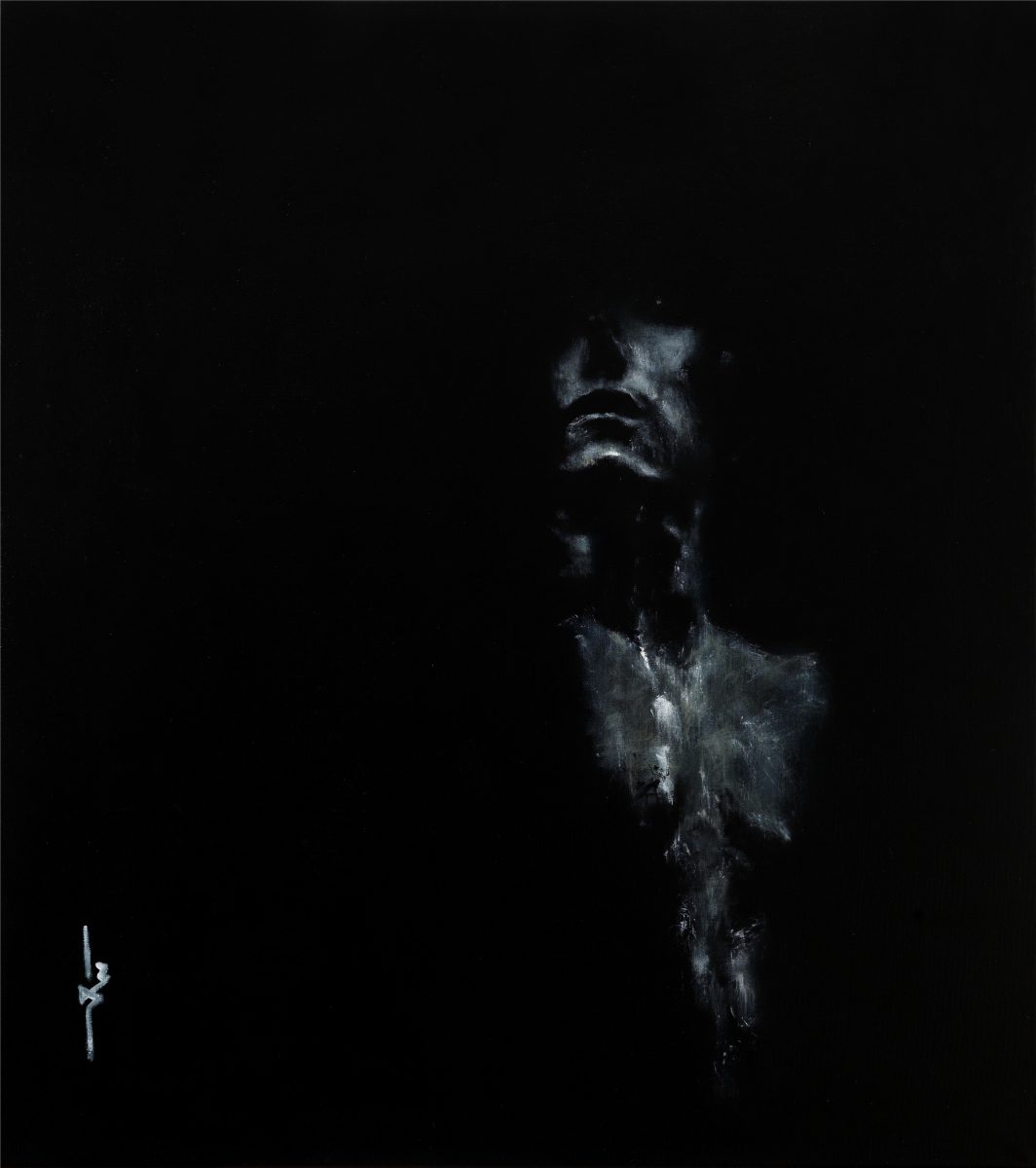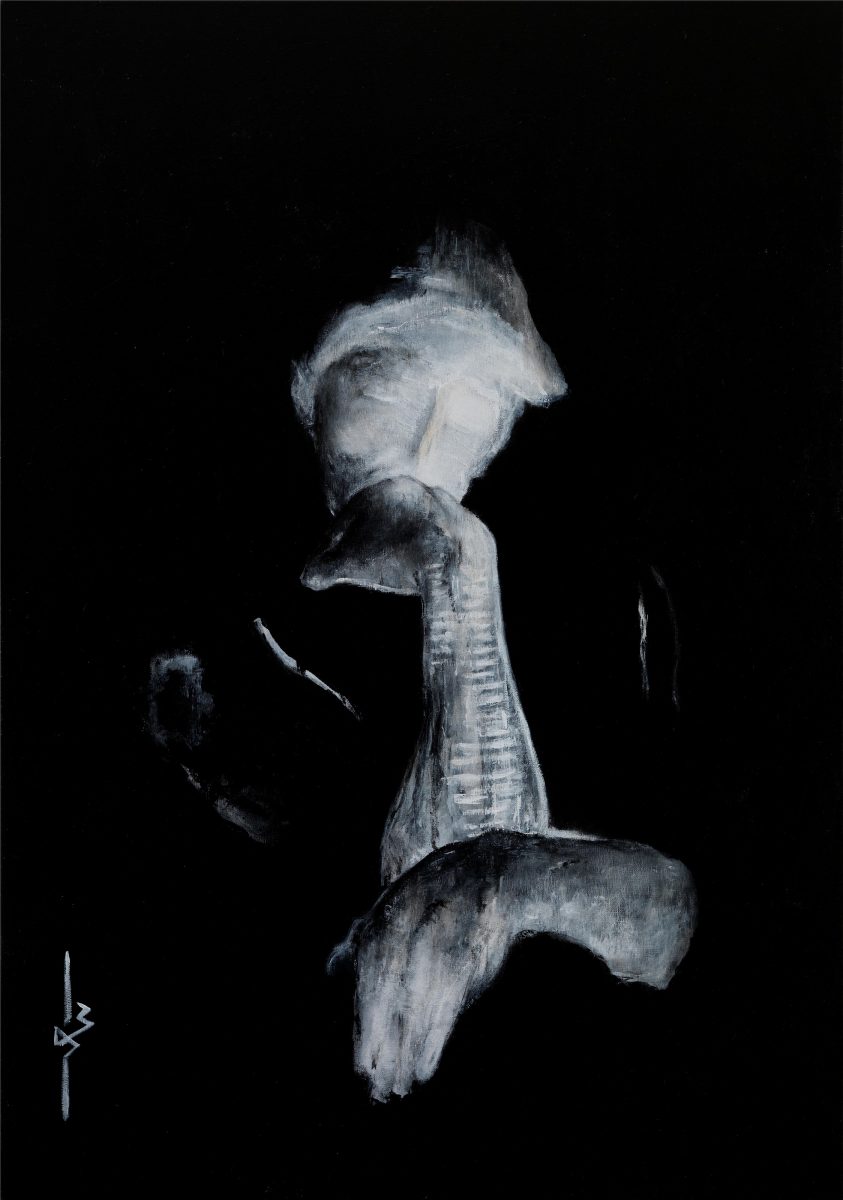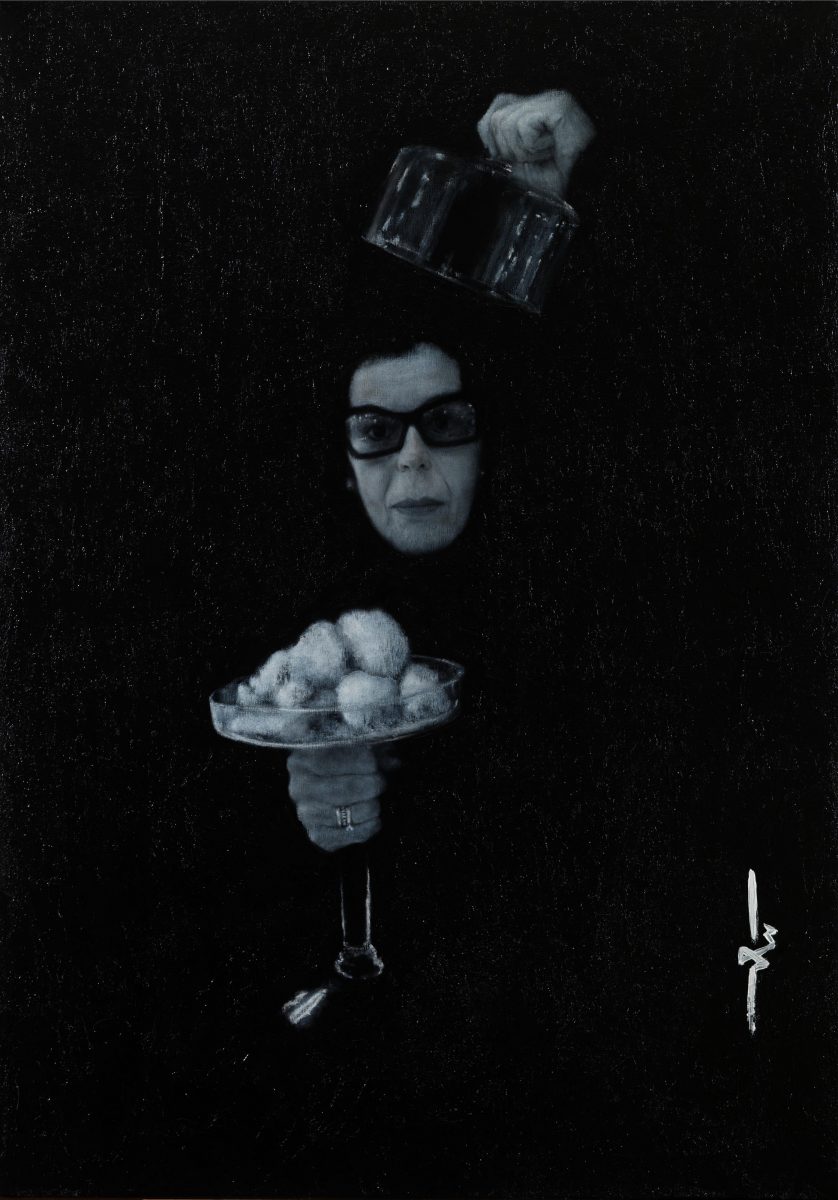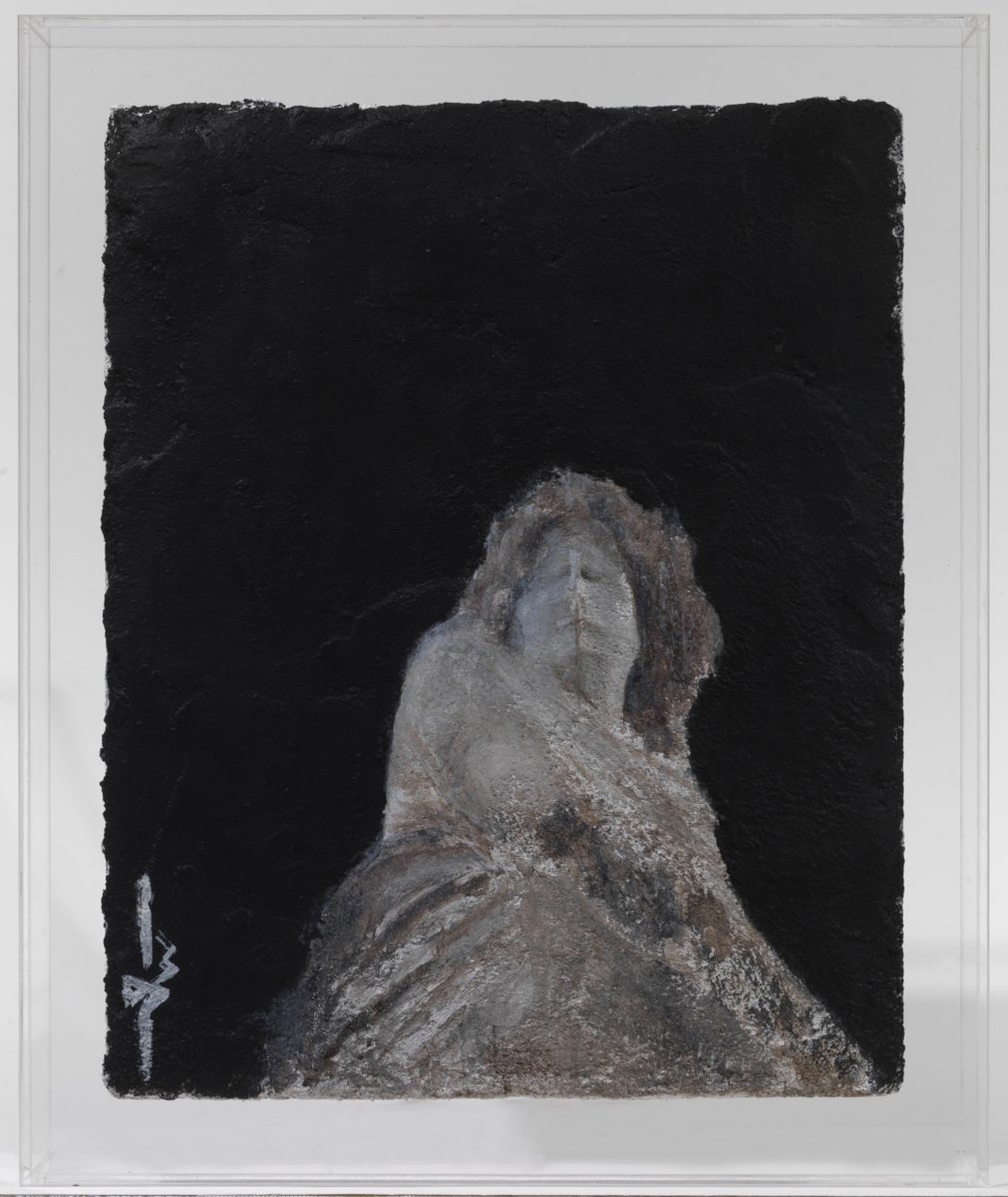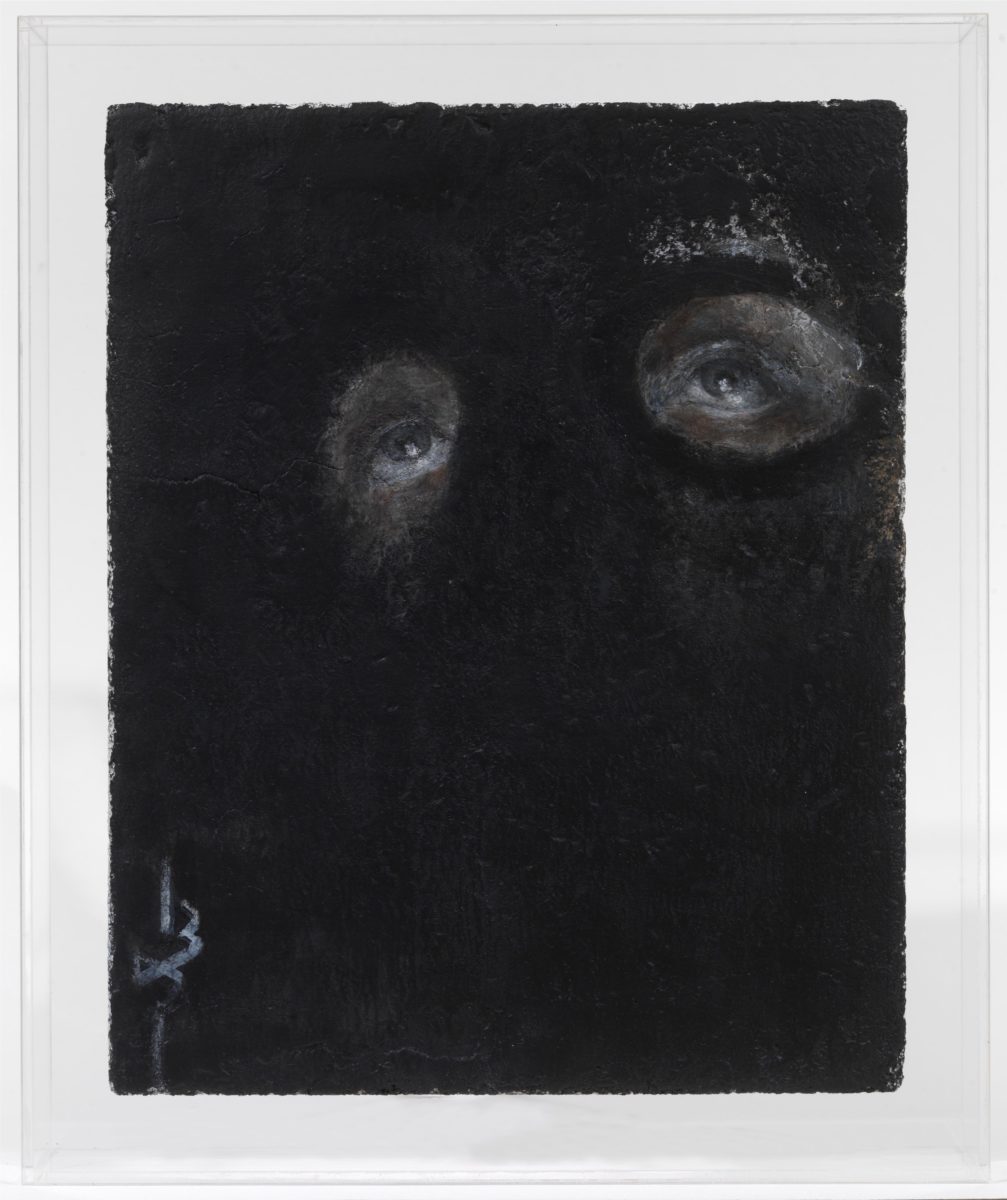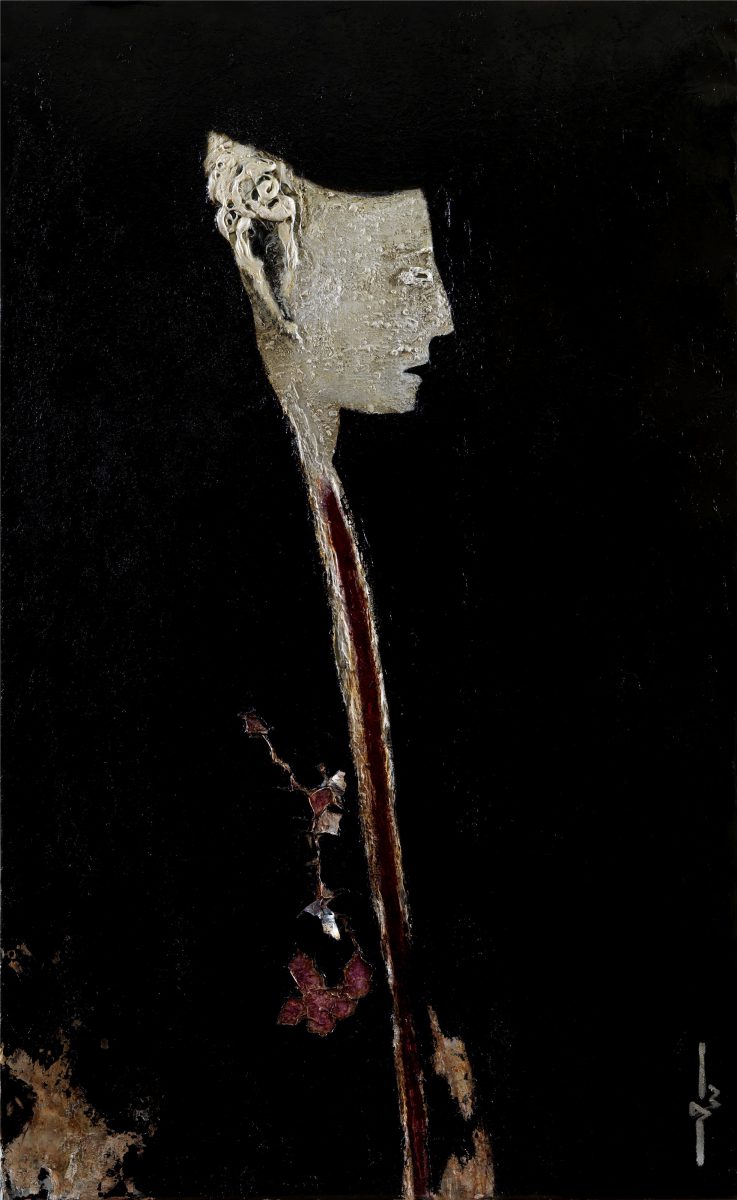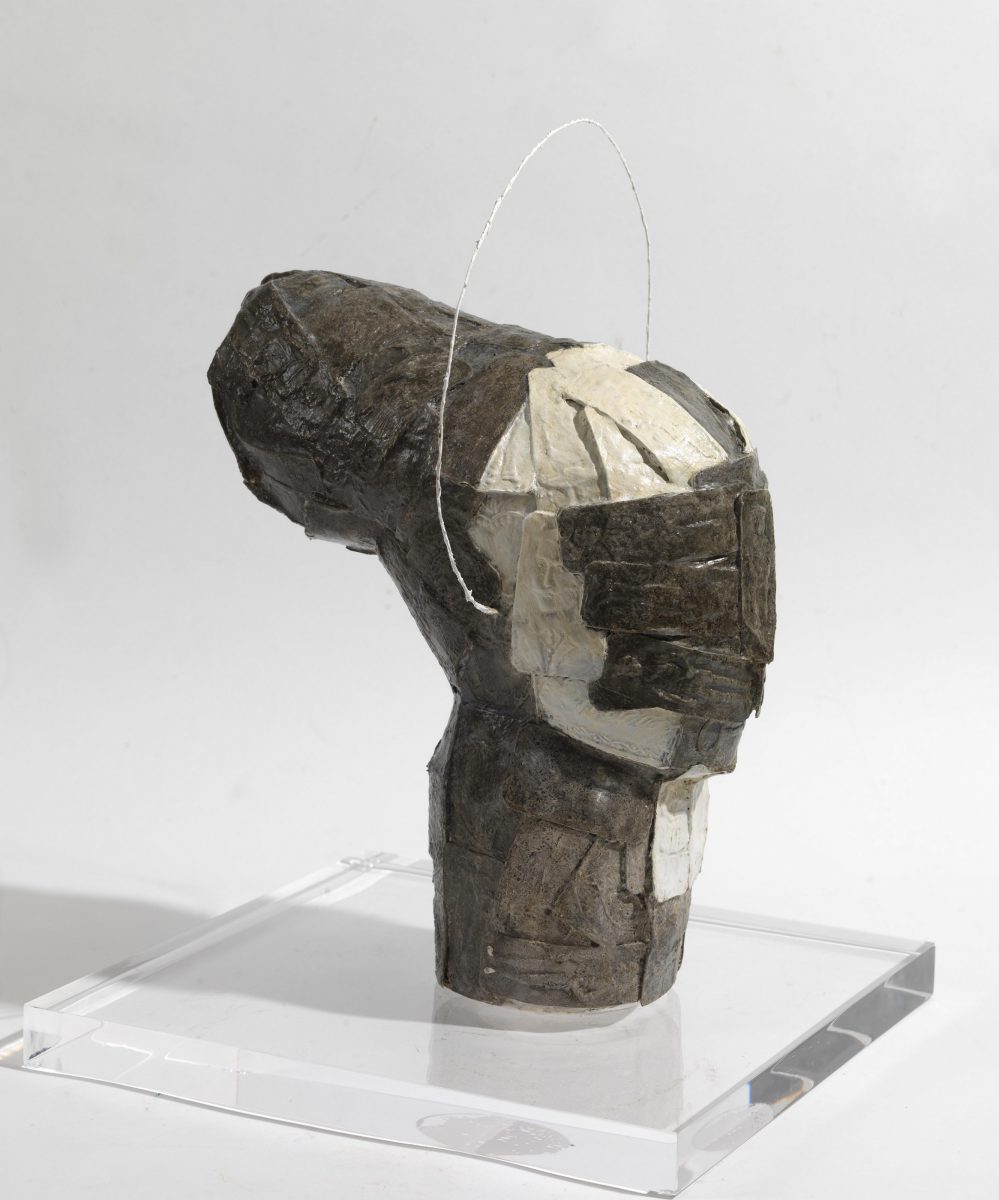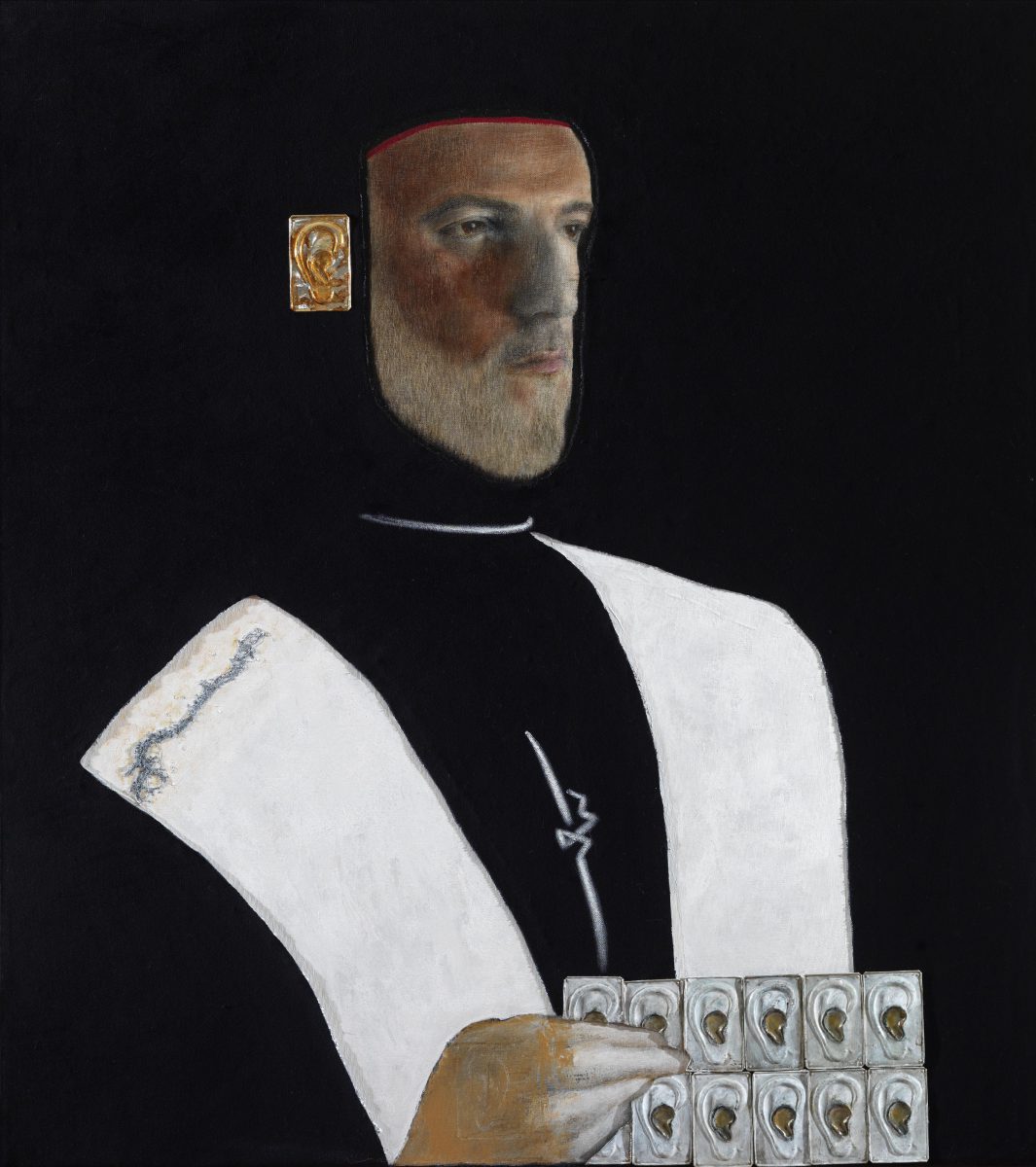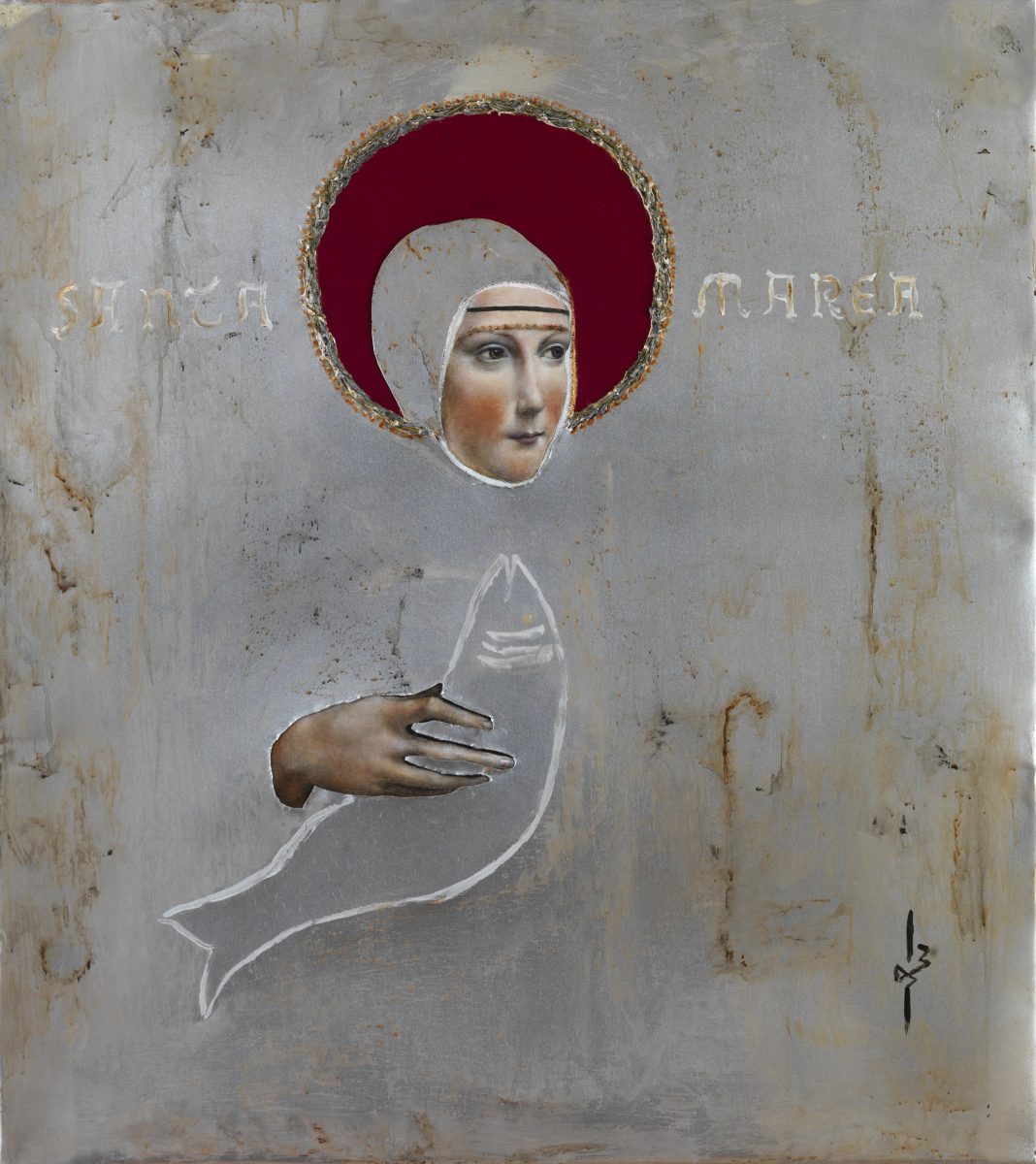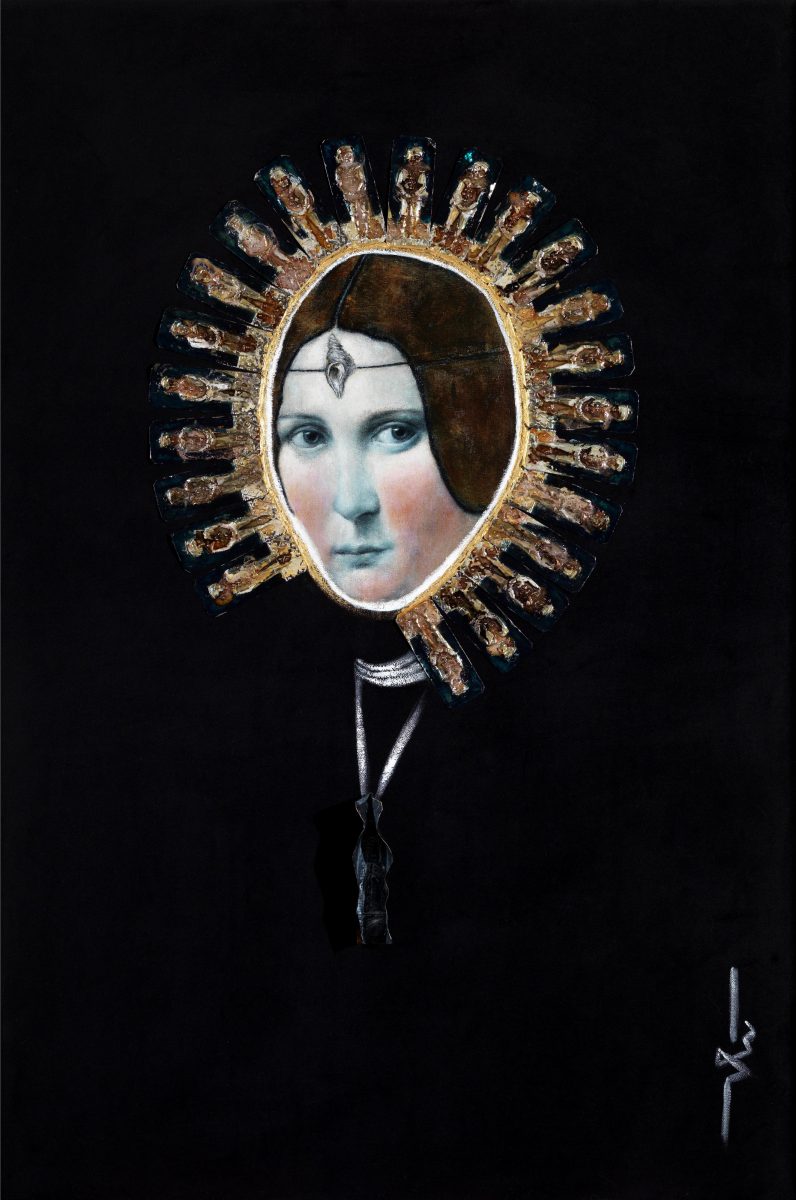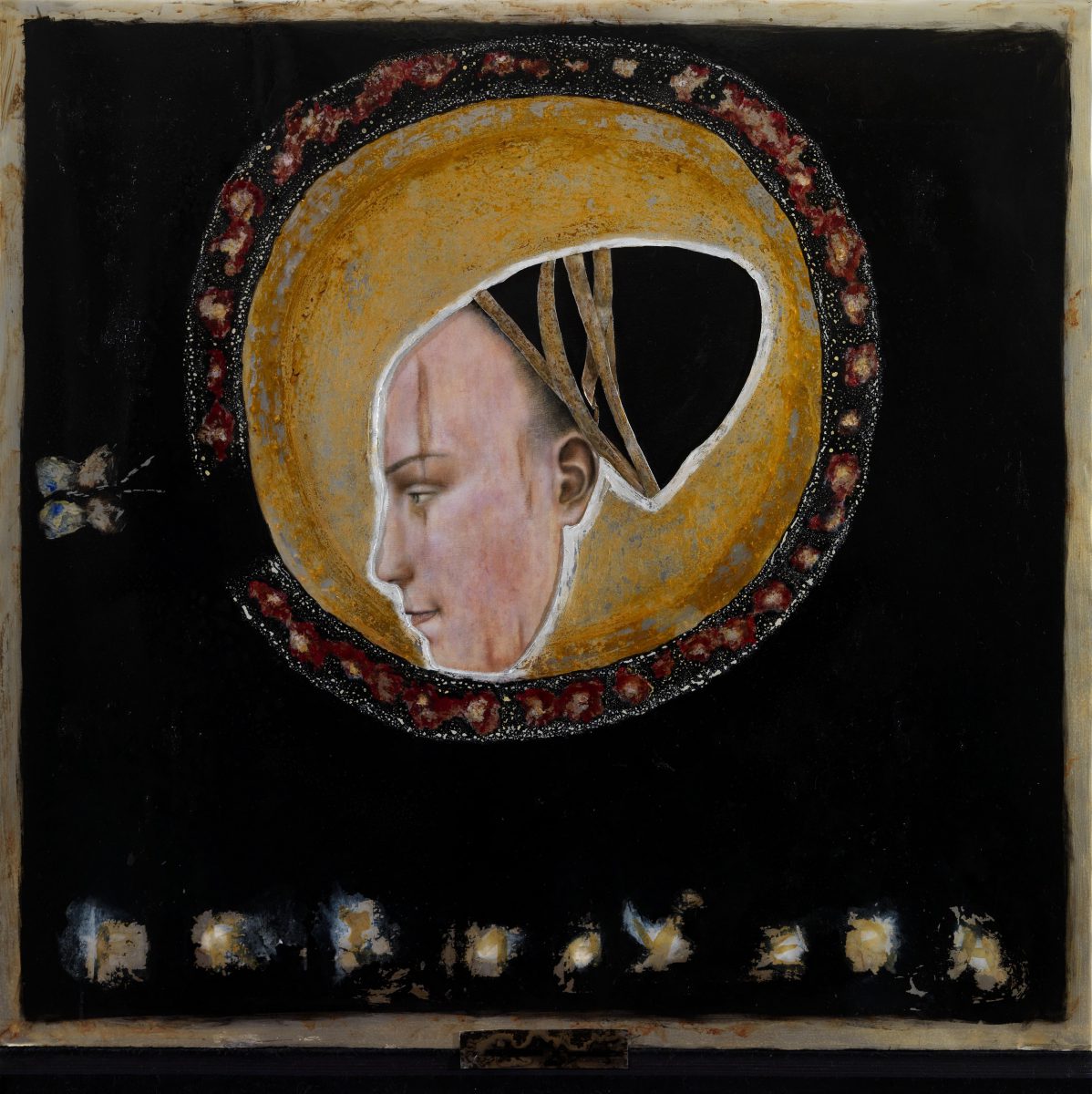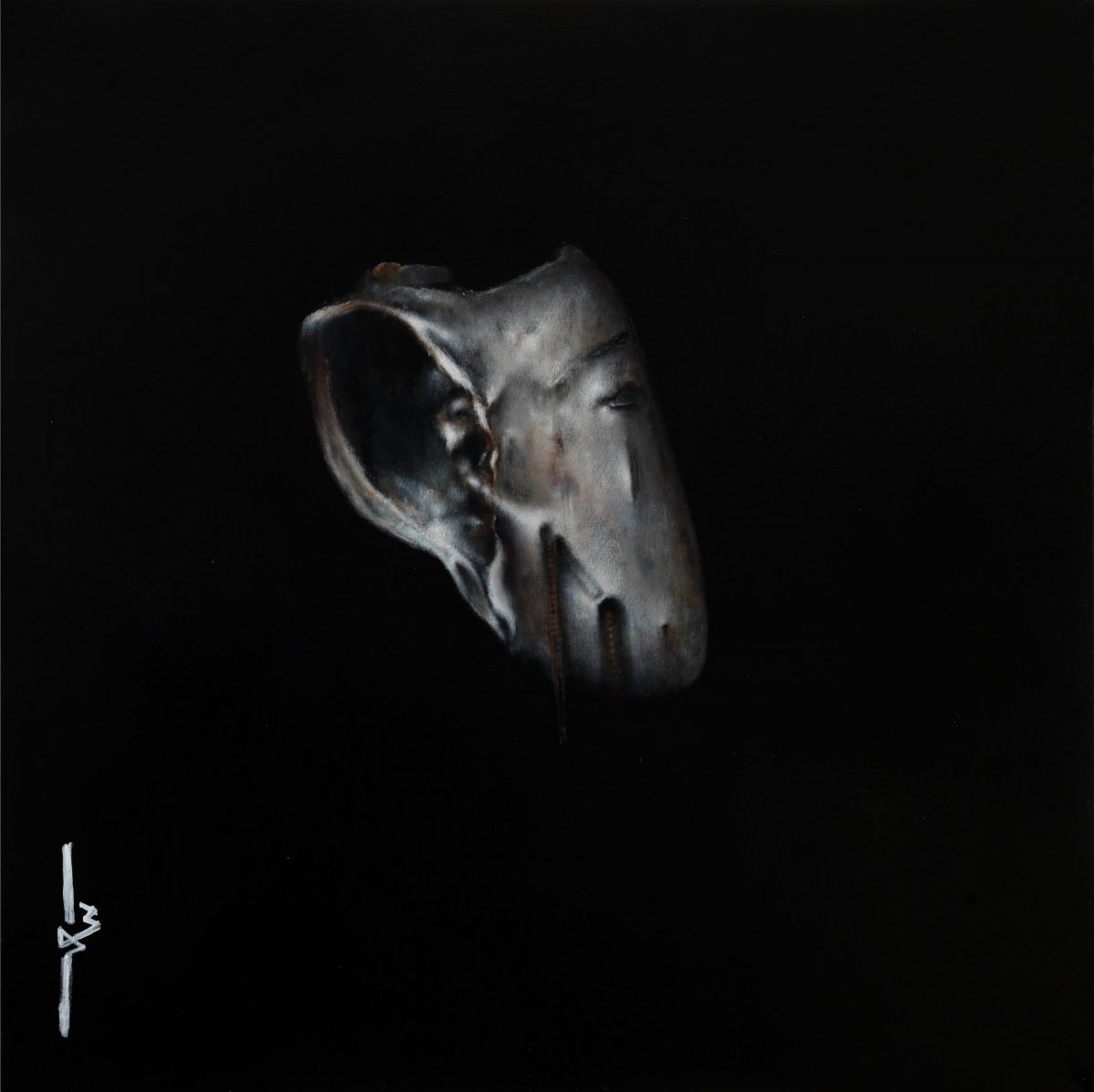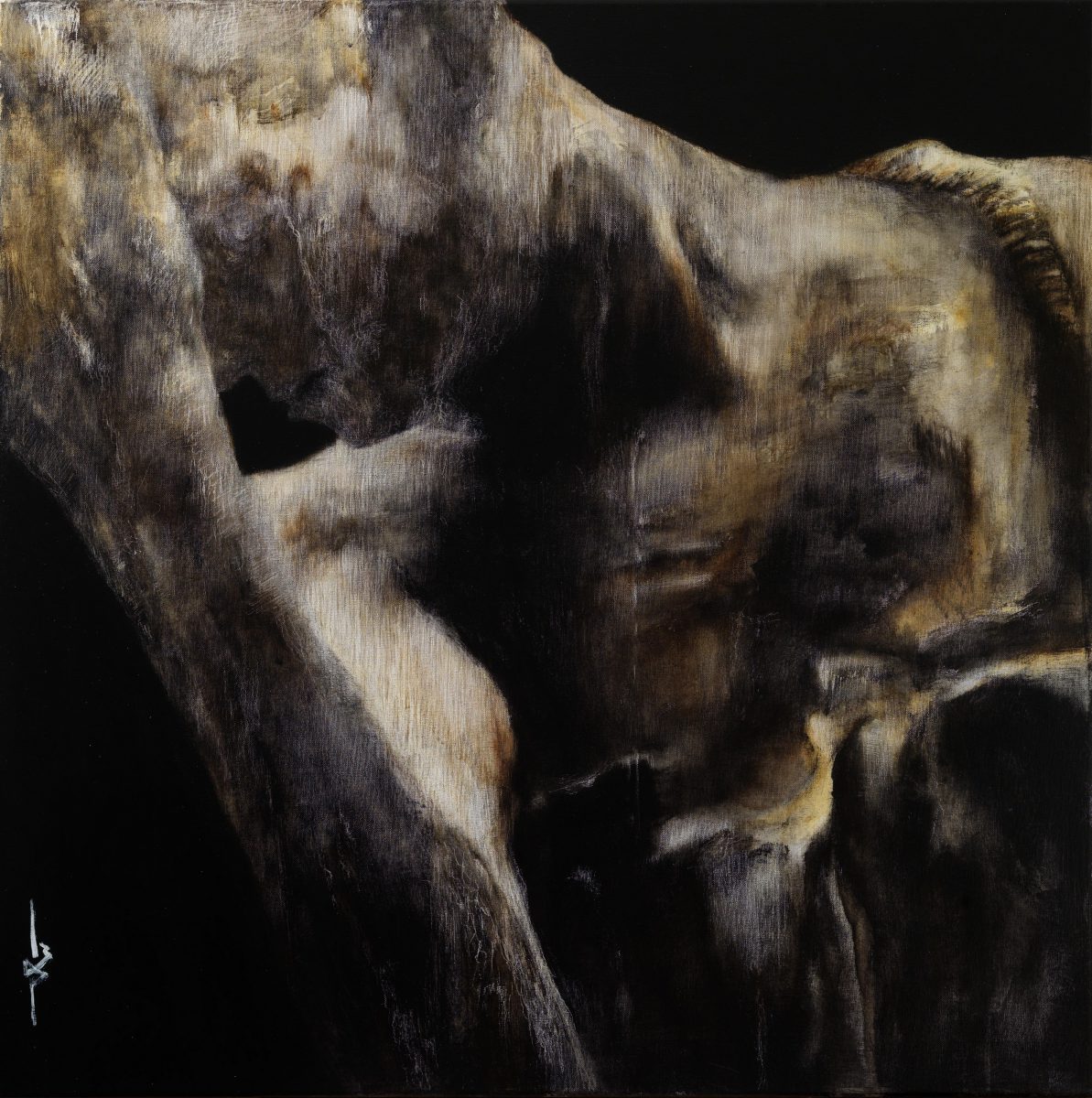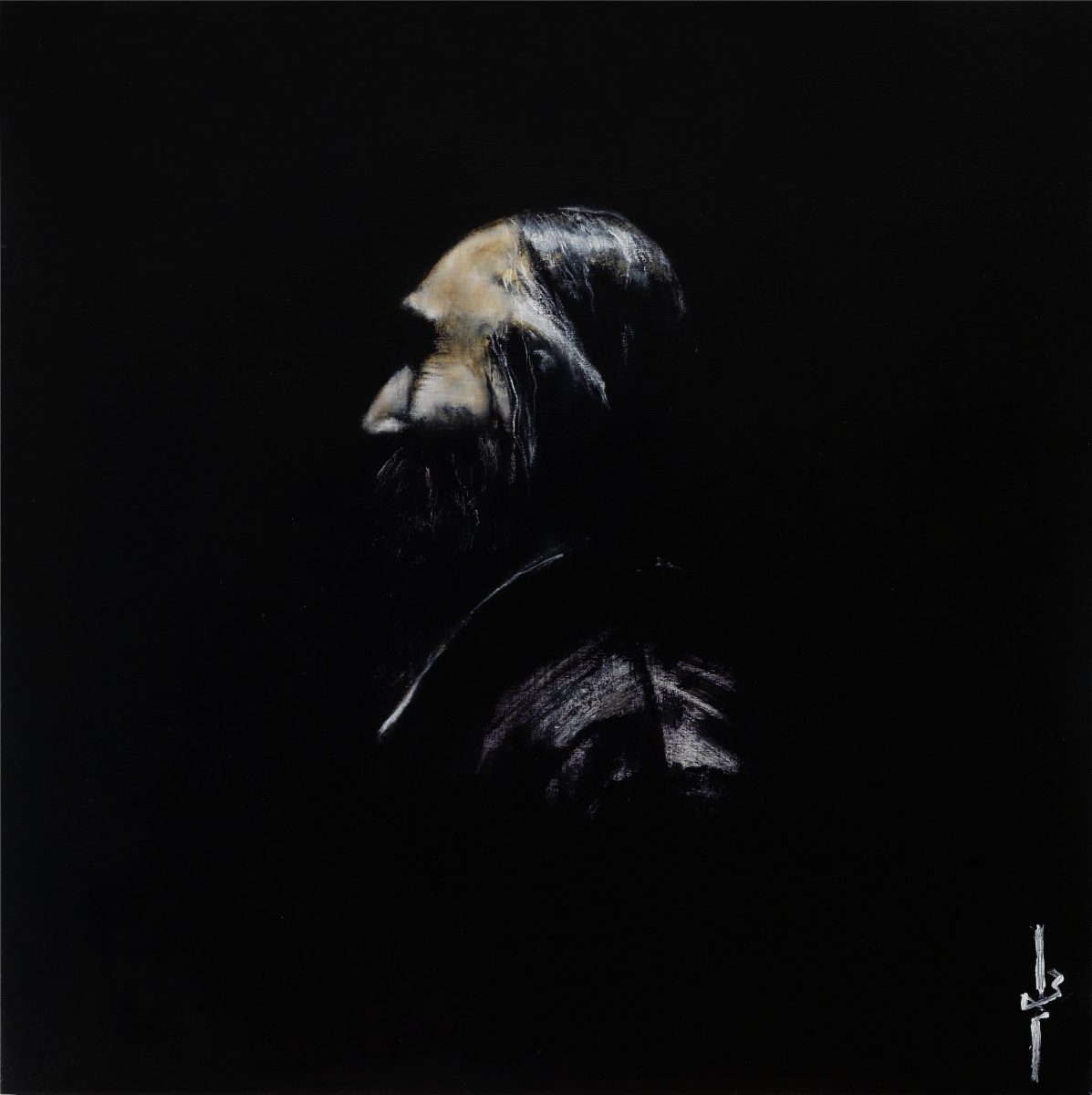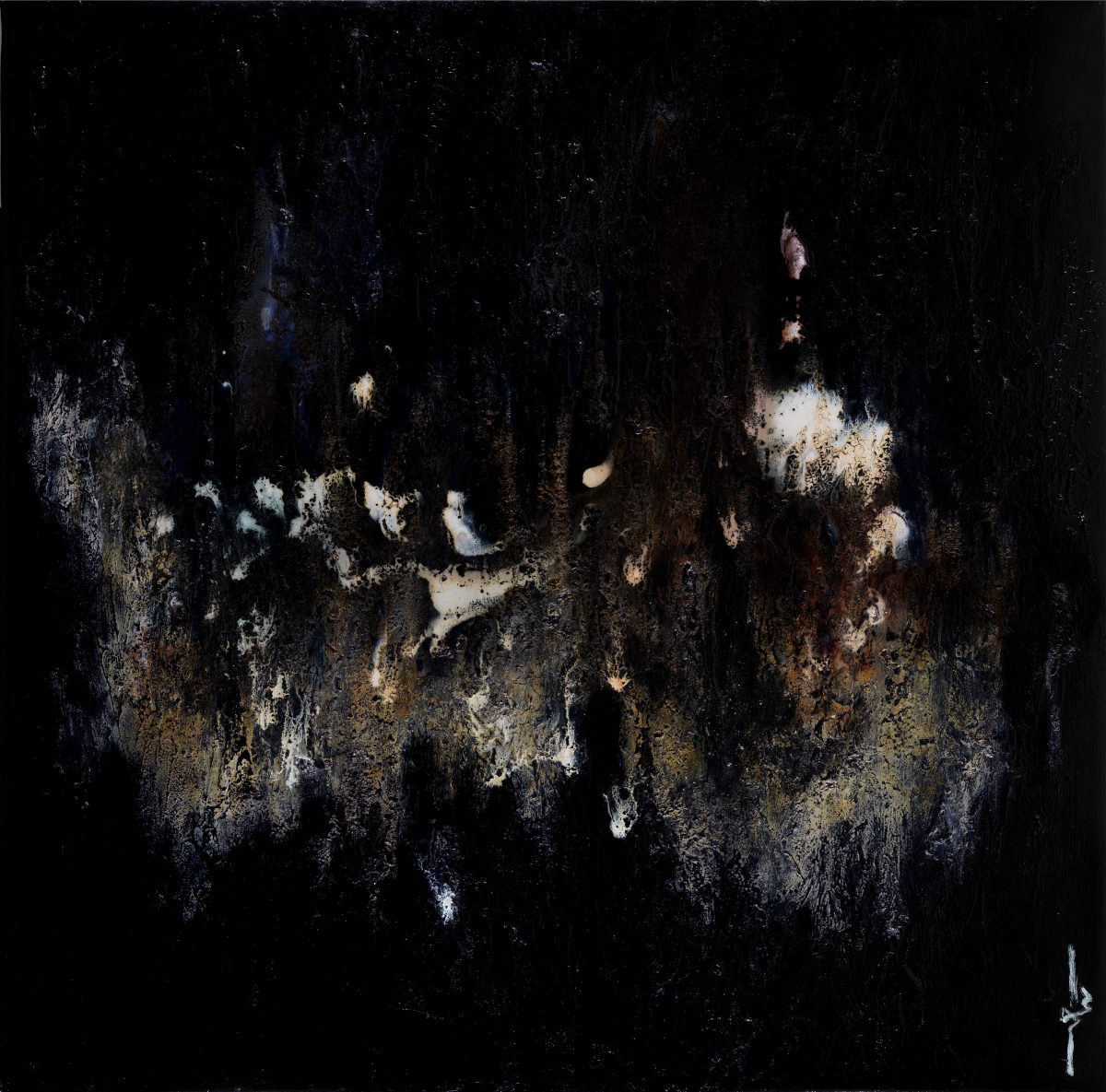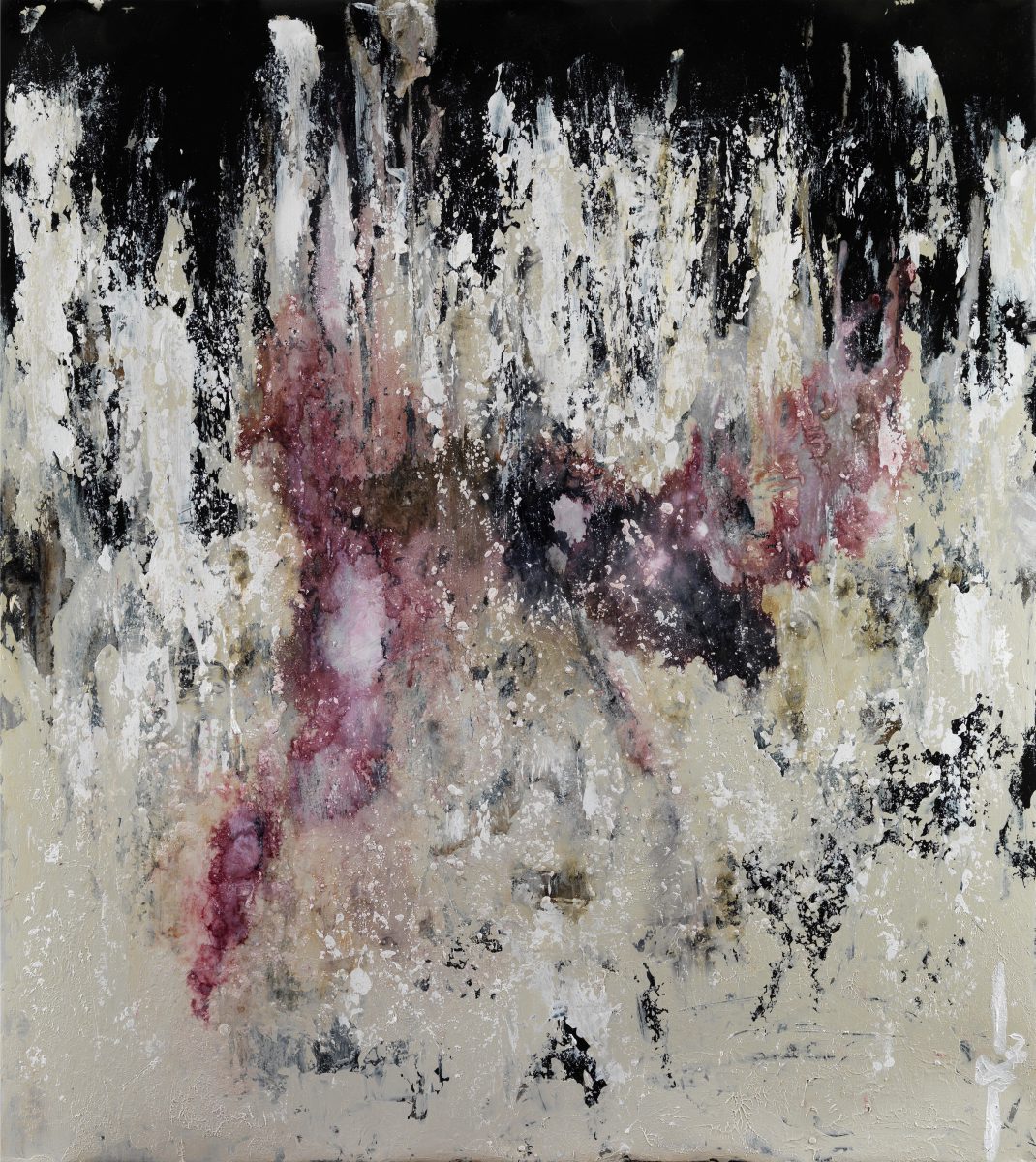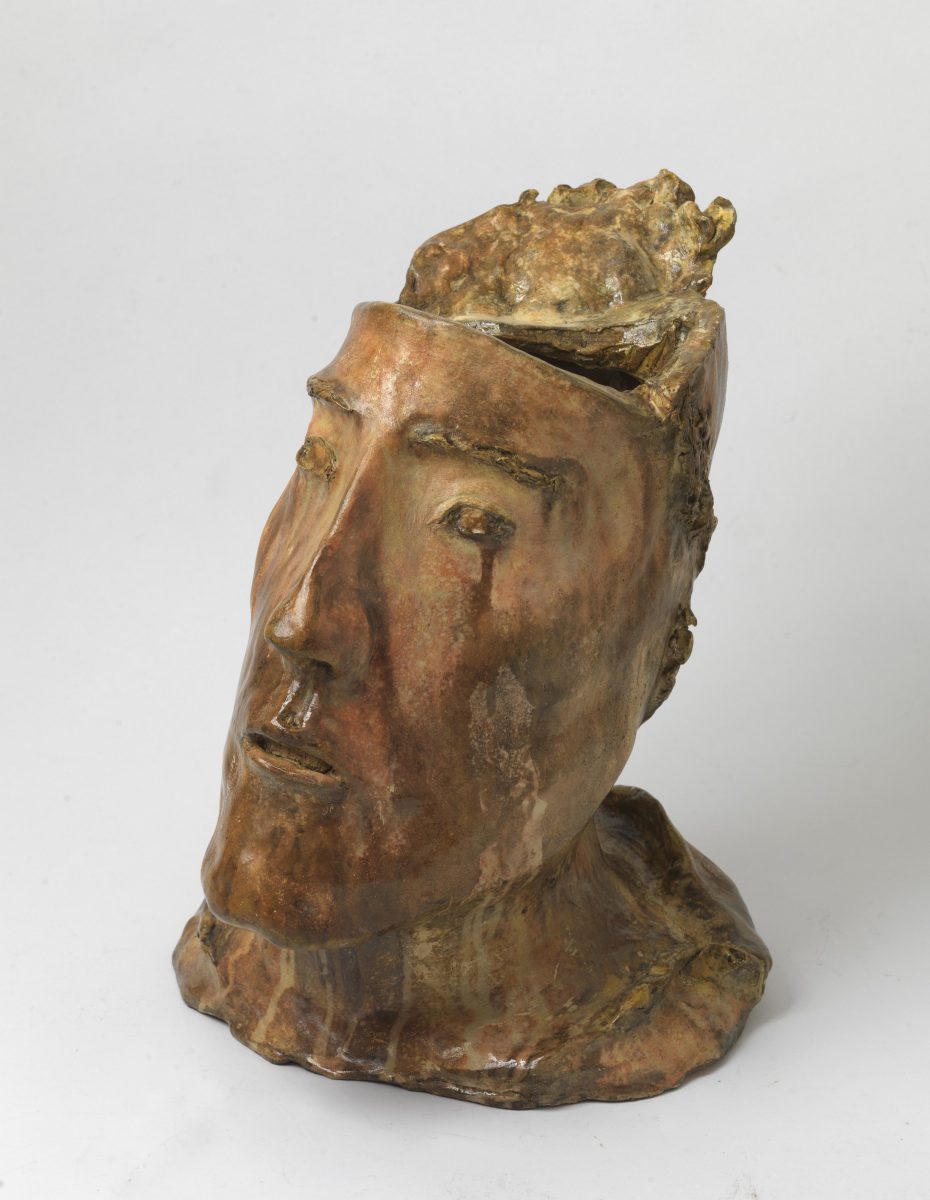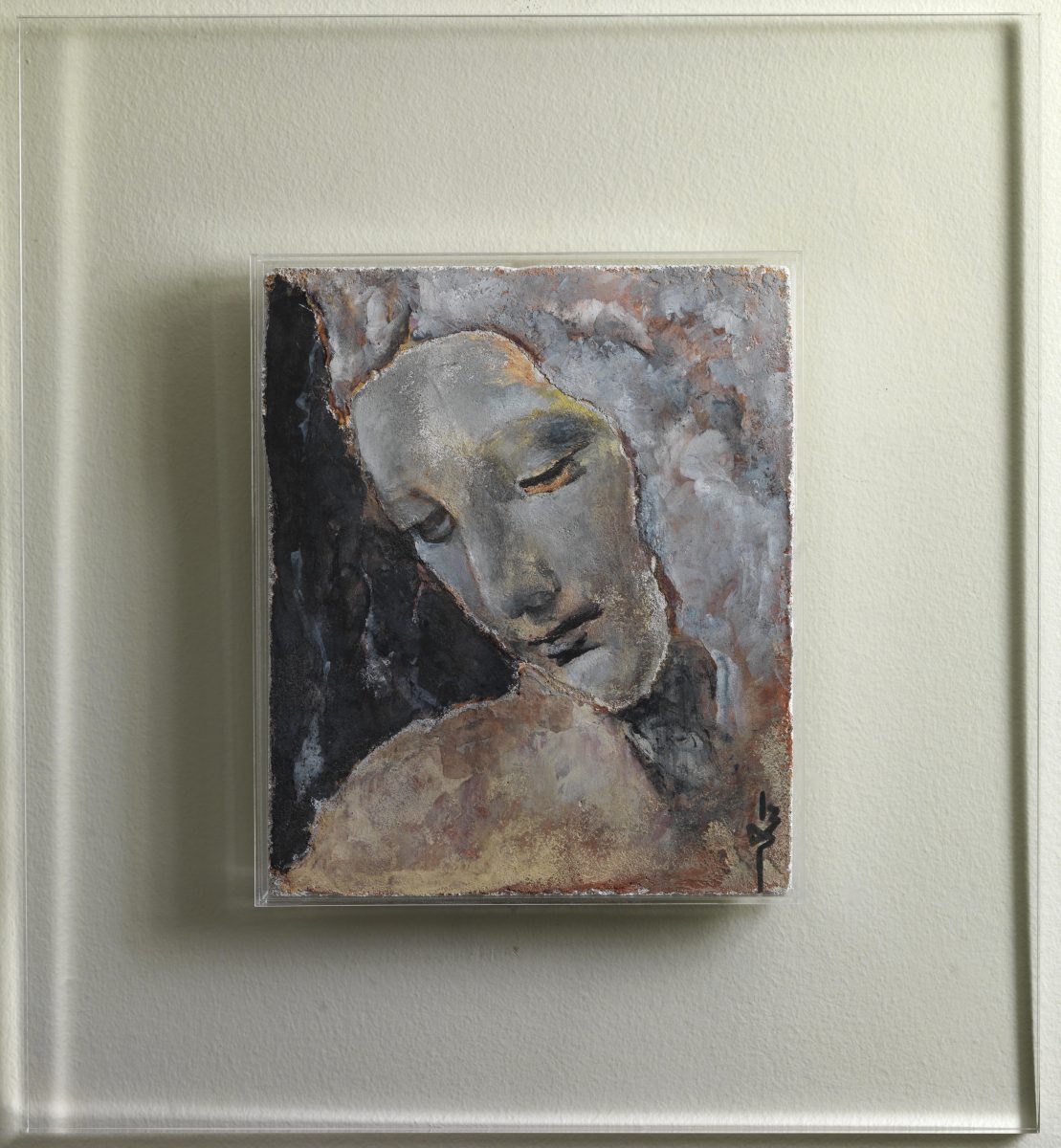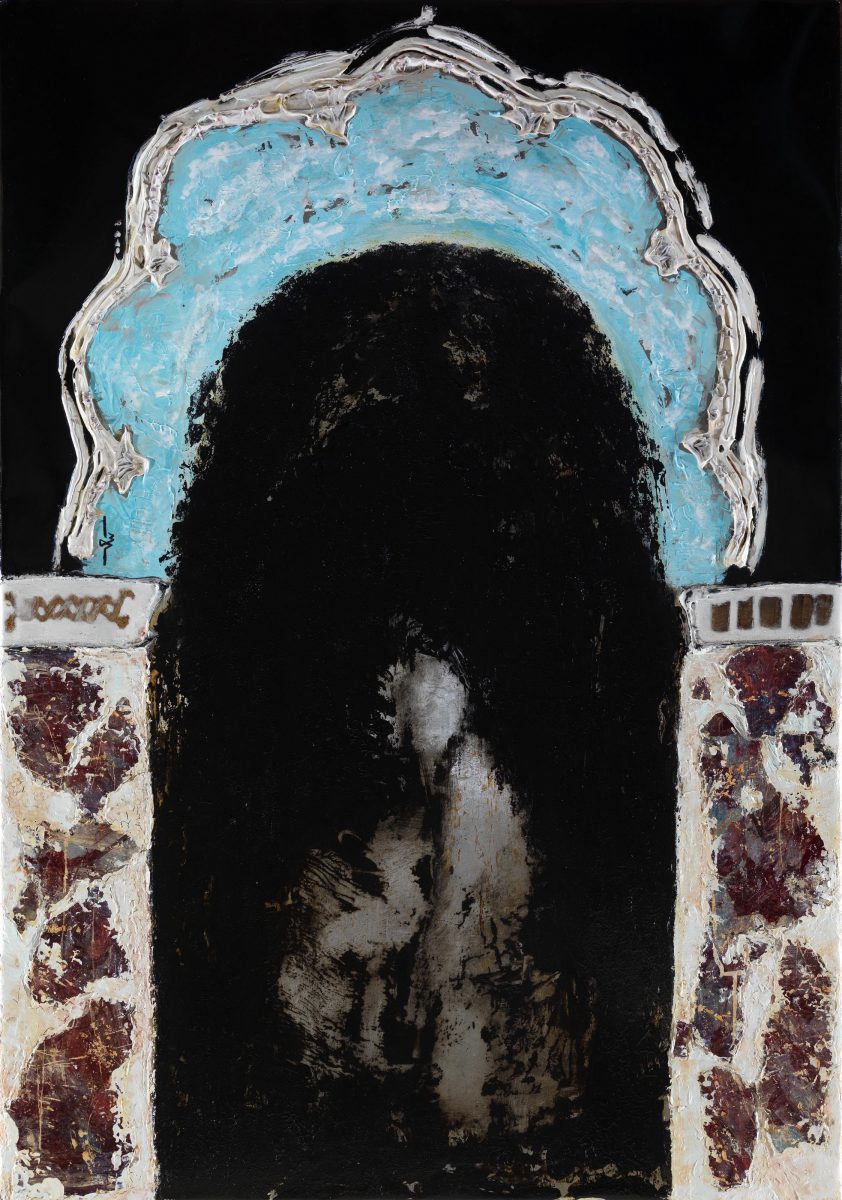Argo Gallery – Athens
Sep – Oct 2016
Polyphony the polymorphous
And, with the sounds of them, awhile recur
sounds from the first poetry of our lives,-
like music, on still nights, far off, that wanner.
Voices, C.P. Cavafy
(Translated from Greek by C.P. Cavafy)
“In the beginning was the Word”, state the opening Gospel lines, to define the supreme power in the creation of the world. And if artistic creation could be envisaged as action, as expression of divine cosmogony, in the sense that the creator – artist, as an almighty god creates out of nothing, giving form to the amorphous, pronouncing his own word to define the spiritual, thus giving life to his creation, then undoubtedly, Vassilis Garyfallakis’ painting universe invites the beholder to apprehend this divine nature and cosmic function of the Word of the creator – artist, and conclusively the incarnate voice of his vocal creation.
A voice whose primeval vibration may be felt as the resonance of a deafening cosmic explosion, an Apocalypse in the universe, taking place right before the viewer’s eyes and triumphantly depicted in the pieces of abstract works of the artist which resemble the palimpsests: the more you scratch their surface, the more they will reveal writings of timeless creation. Later on, it is transformed either to the articulate word, human, personal, intimate, outgoing, critical, caustic and humorous, or to in-articulate cries of existential anguish and silent moments of stifled sobbing, even to a fragile rustle of moments of privacy and meditation, expressively manifest in his portraiture, frescos or sculptured figures.
Finally, in his imposing “hagiographies” -his self-portrait included- this voice of the artist, magic and variable, acquires a spiritual and metaphysical hue, it turns to prayer and psalm, develops into melodious, religious hymn aspiring to confront and challenge the divine in search of this so dearly desired redemption of the soul.
However, if at first glance, the inner voice of the artist seems to be spent in self-reference, it actually opens up into a multilevel, never ending intertextual dialogue. This way, it vigorously echoes the Baroque aesthetics, engages in fruitful conversation with the works of Da Vinci, Pisanello and Rodin, traces back to the medieval knight epics, encloses the troubadours’ poetry, reflects byzantine iconography techniques, communicates with modern art such as photography, incorporates religious votive offerings to metallic elements, activates Christian symbols, borrows from history and everyday life, calls upon elements from Egyptian wall-paintings, struggles with the Renaissance fresco technique. All of them alluring voices from the past spring masterly from the works of Garyfallakis, every time traditional crafts intermingle with contemporary techniques and materials, on canvas and aluminium, when used by the artist as base of his paintings.
The canvas white becomes the immaculate page on which the artistic creation is executed. The reflection on the aluminium surface works as purging force of a transforming mirror in which the creator comes face to face with his phantom-image, while the characteristic black background of the paintings suggests the chaos through which springs out, as light, the miraculous.
And all these accompanied by hymns of the Early Music which thematically embrace the whole and historically have laid the foundations of polyphonic music. A polyphony that seems to penetrate the artist’s painting universe in various ways, breaking down the barriers of a homophonic, therefore barren approximation. Orchestrating a melodious symphony himself, conducting a concerto of heterogeneous voices, he stages skillfully a fine arts world where polyphony, in the sense Bakhtin uses the term, becomes the supreme authority in creation, it becomes polyphony polymorphous. A continuous and harmonic contrapunto, that is. The Word incarnate.
Domna Chanoumidou
Theoritician – Art Critic
